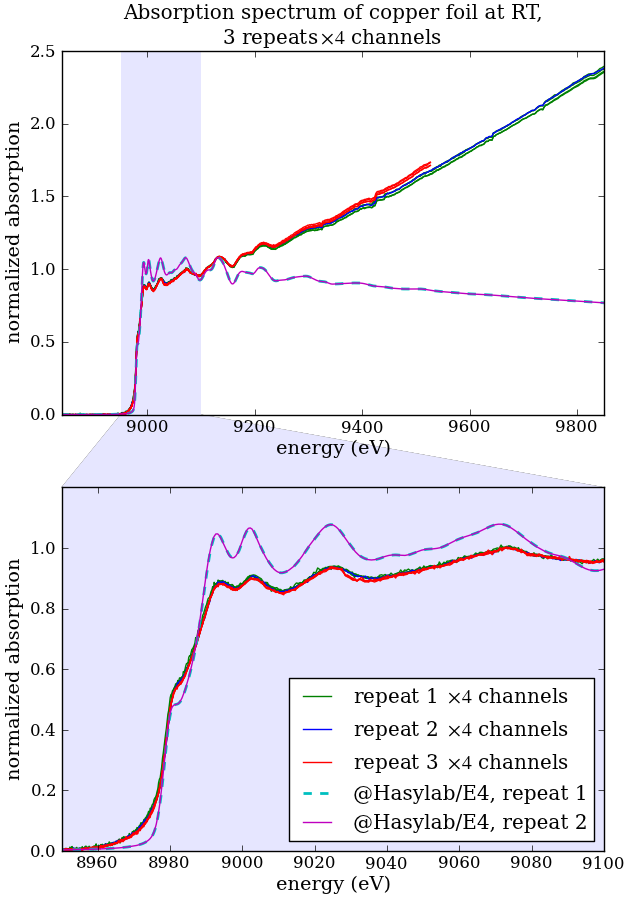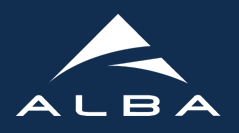Beamline commissioning
13.02.2013 Total Electron Yield detection
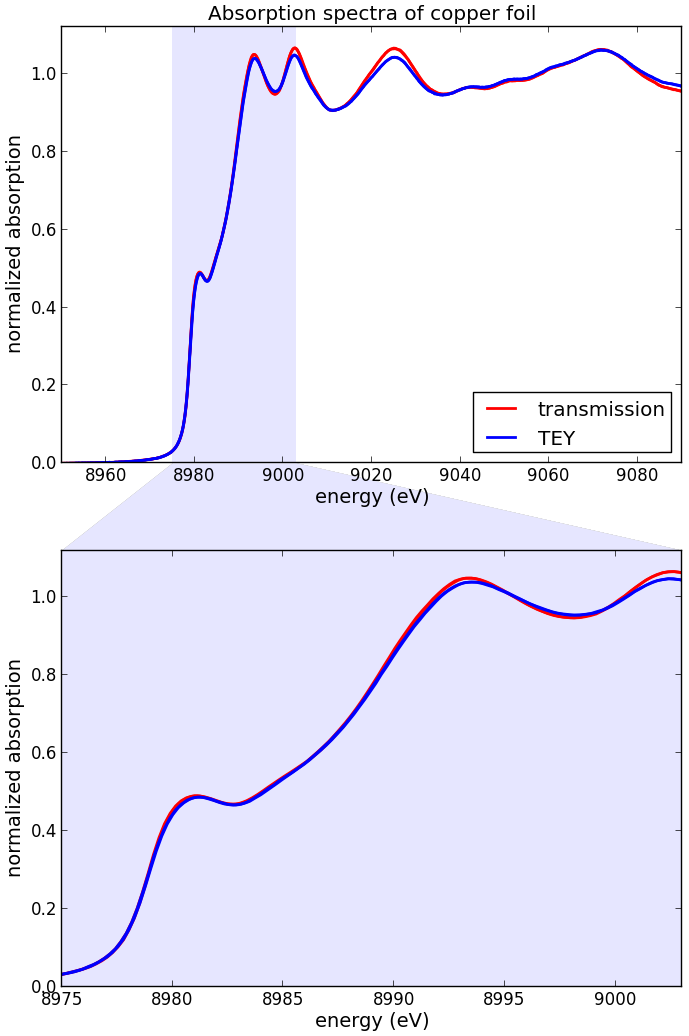
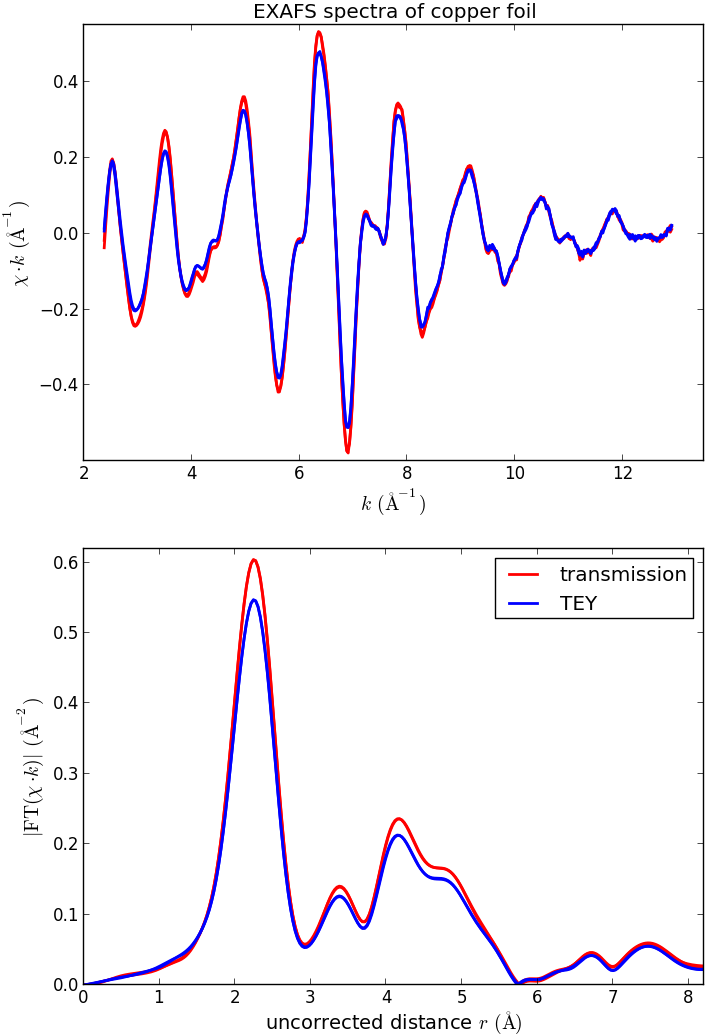
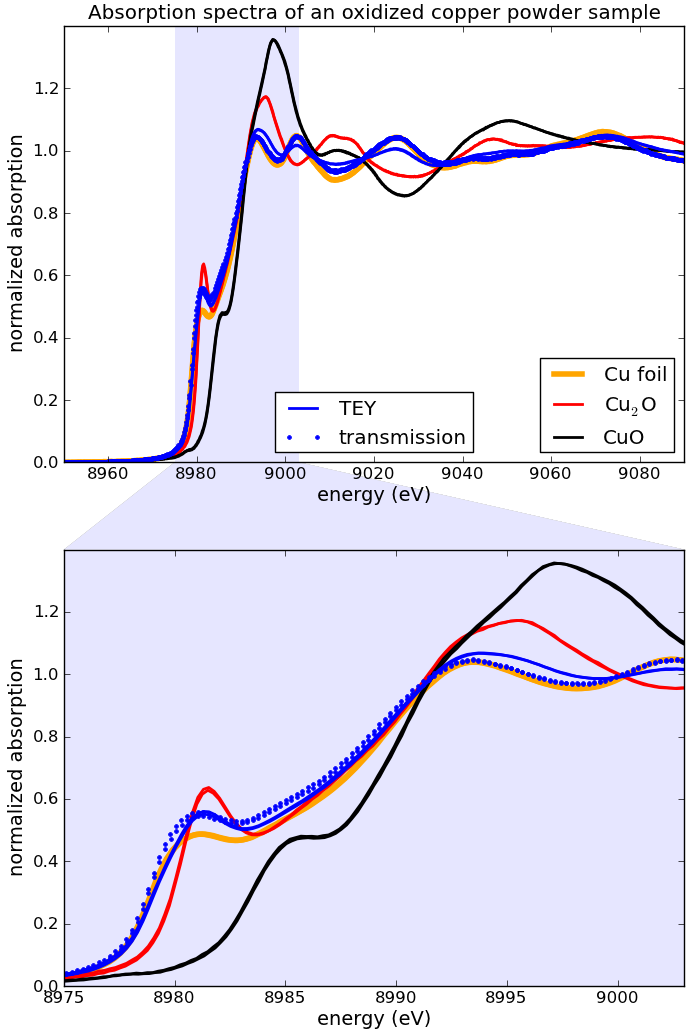
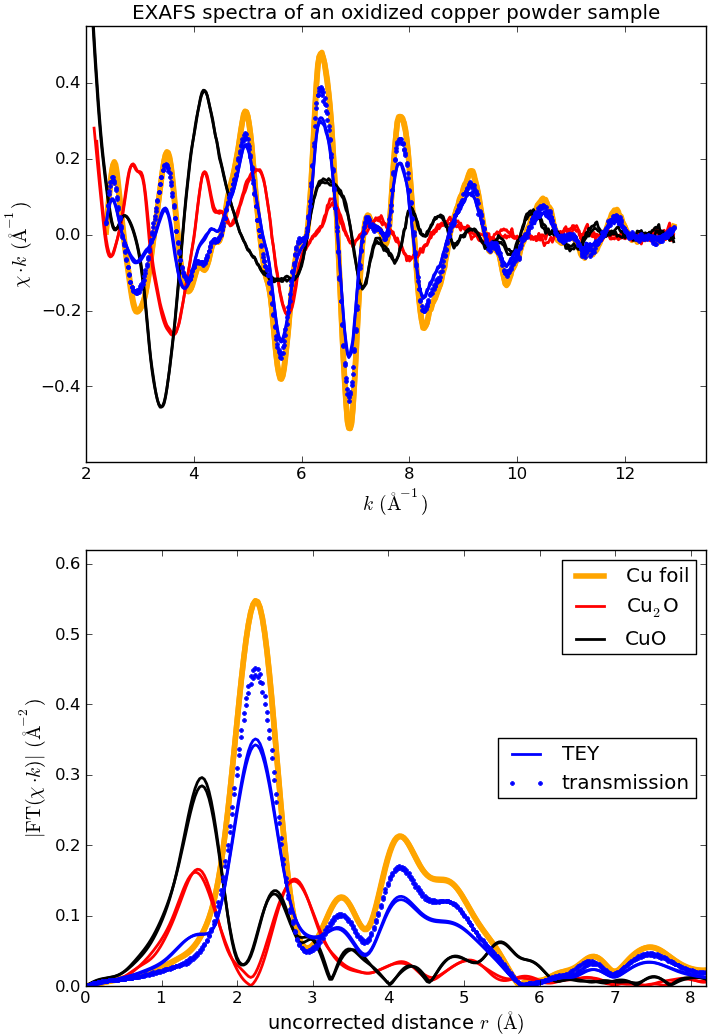
05.12.2012 Beam focusing and defocusing
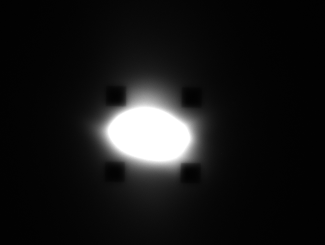

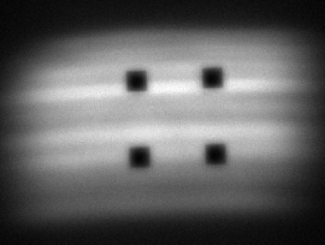
05.12.2012 Moderately quick energy scanning
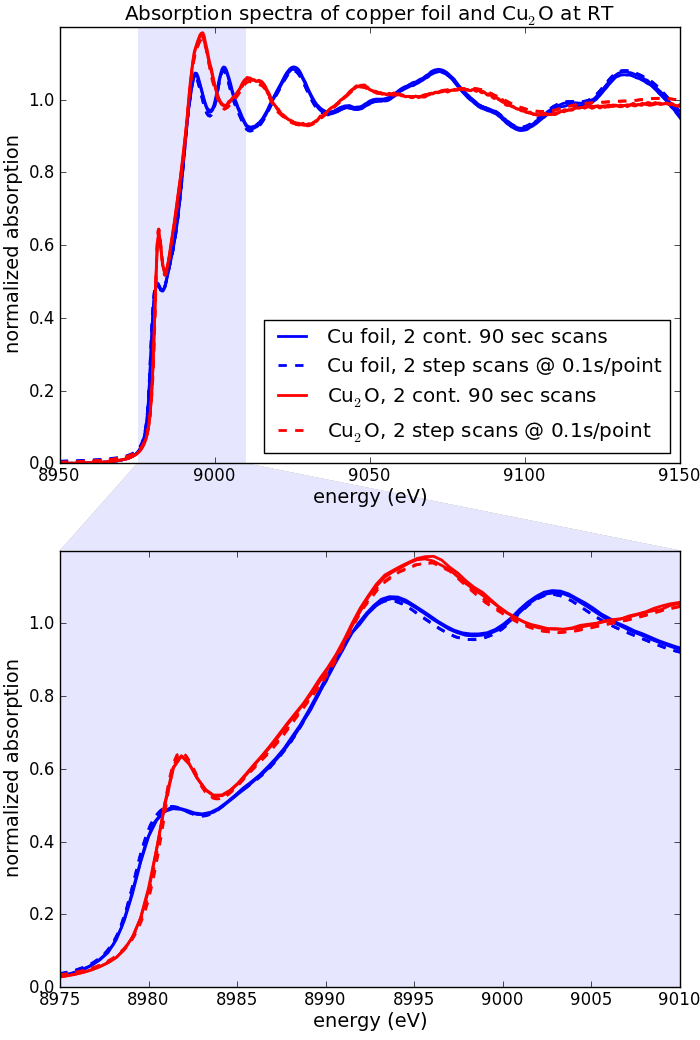
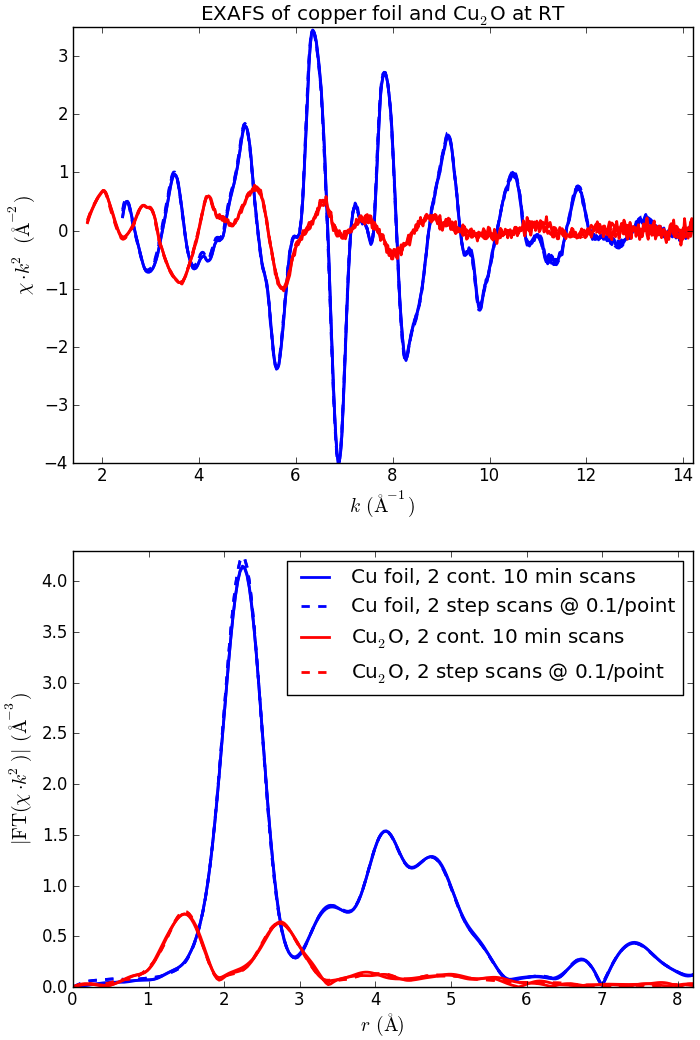
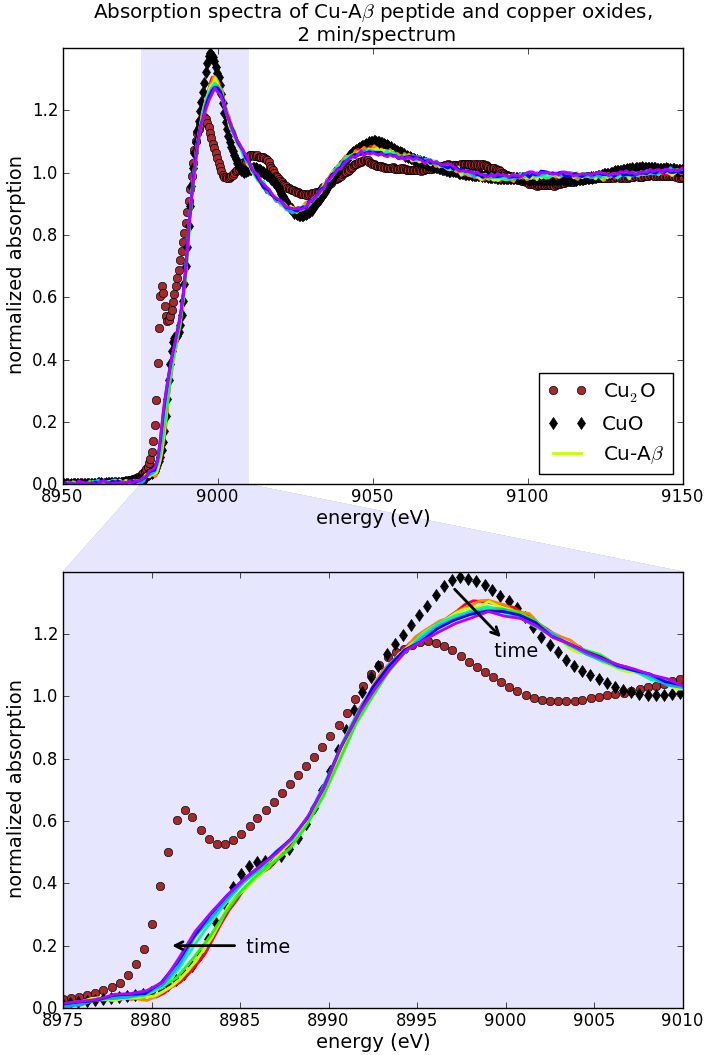
30.10.2012 Quick energy scanning
The group of Prof. R. Frahm (O. Müller, O. von Polheim, P. Becker) from University Wuppertal, Germany, together with the beamline team have measured the first quick absorption spectra. The spectra were measured using the ionization chambers and the electronics of the visitors. The figure below shows the raw spectra of copper foil taken within 0.5 seconds (XANES within 25 ms!), see the upper x-axes.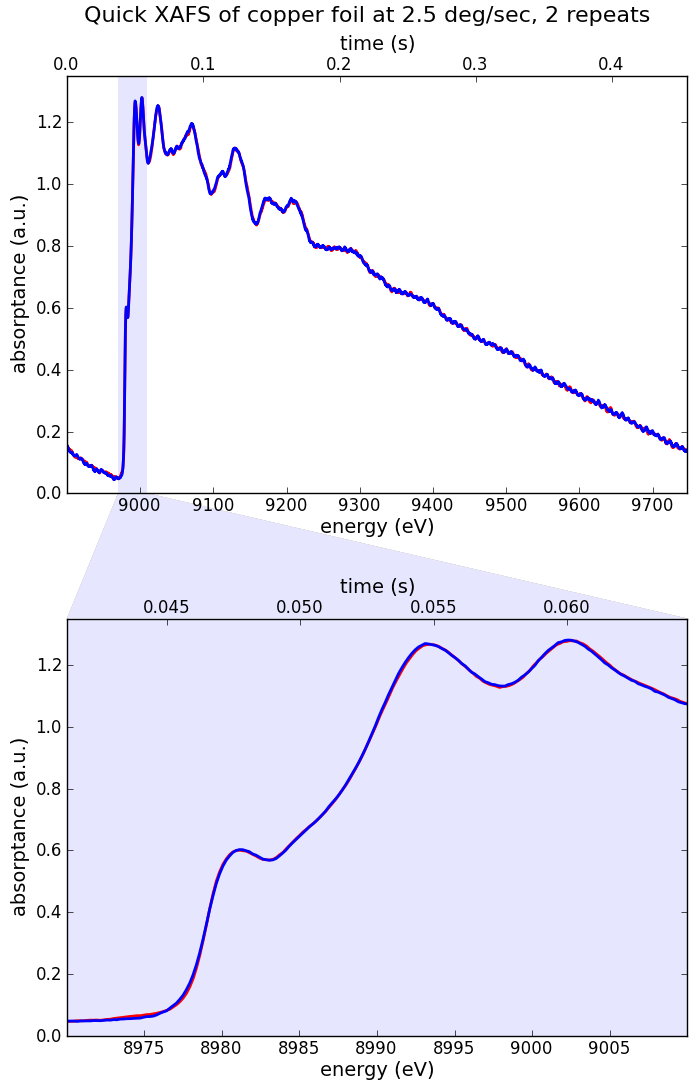
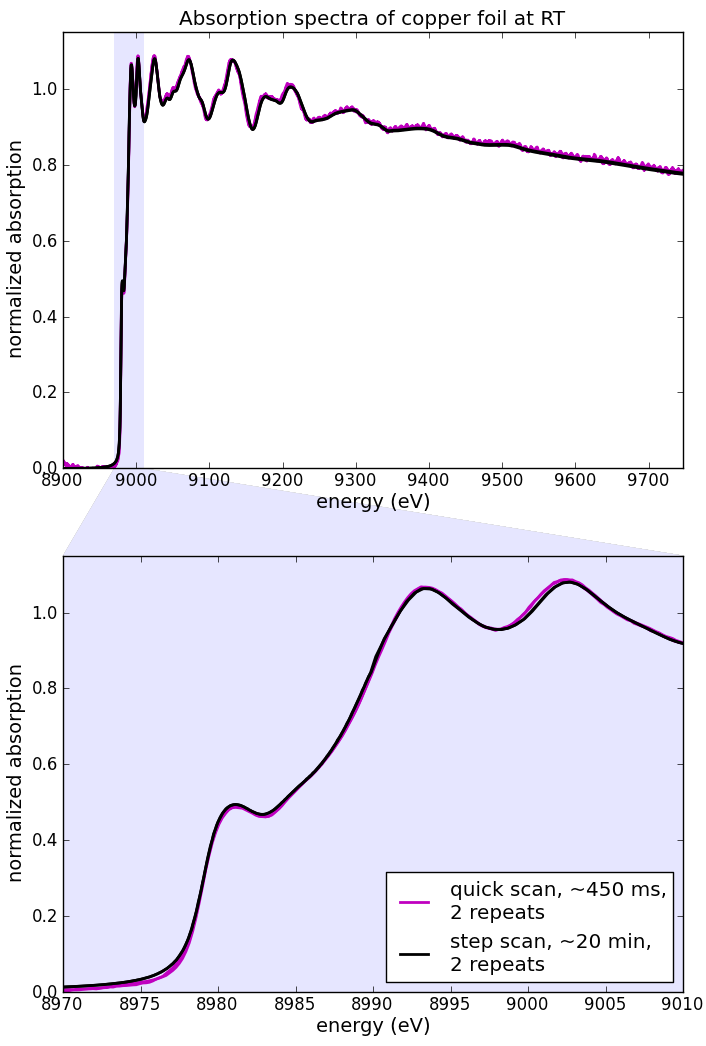
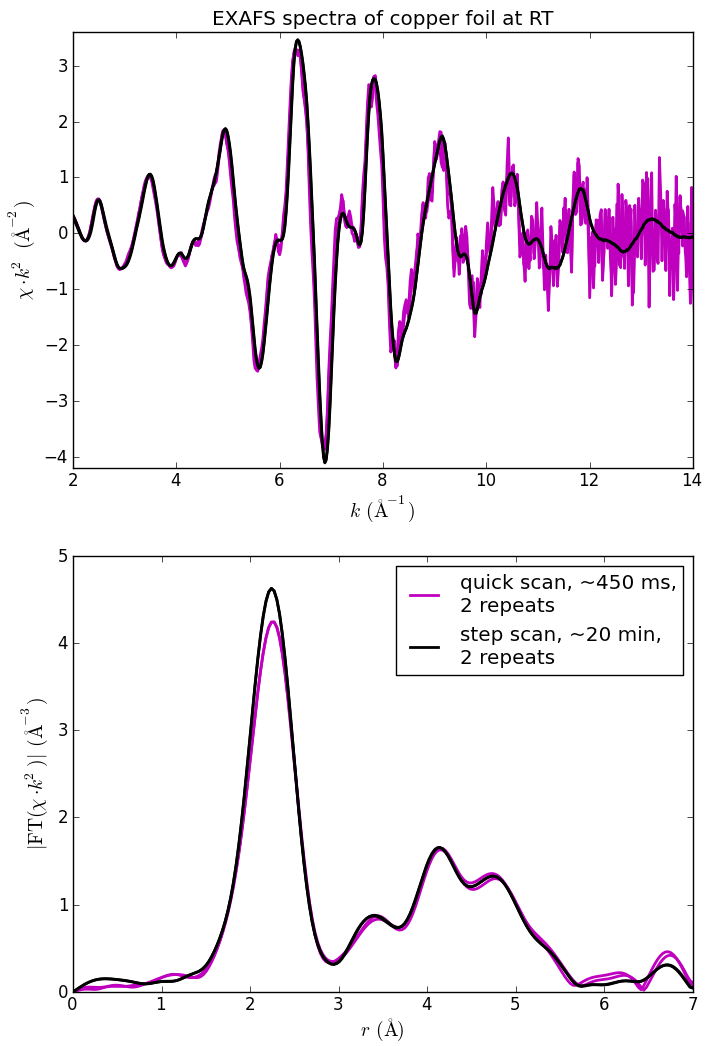
07.10.2012 Real samples (pellets). Monochromator stabilization
The piezo feedback controlling the fine pitch adjustment of the second crystal is now working. It stabilizes intensity and spot position of the beam in the experimental station.
The figures below show spectra of two copper oxides, Cu2O and CuO, prepared as cellulose-supported 5-mm-diameter pressed pellets. The sampling time was 0.1 s and in the EXAFS part was growing as k2. The spectra have good overall reproducibility.
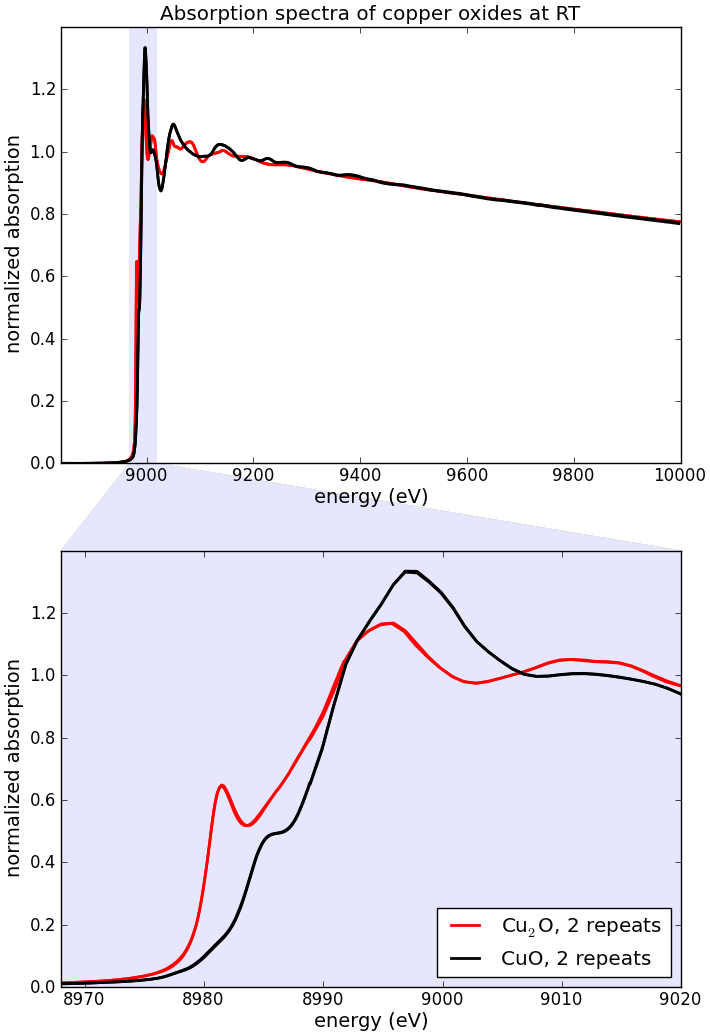
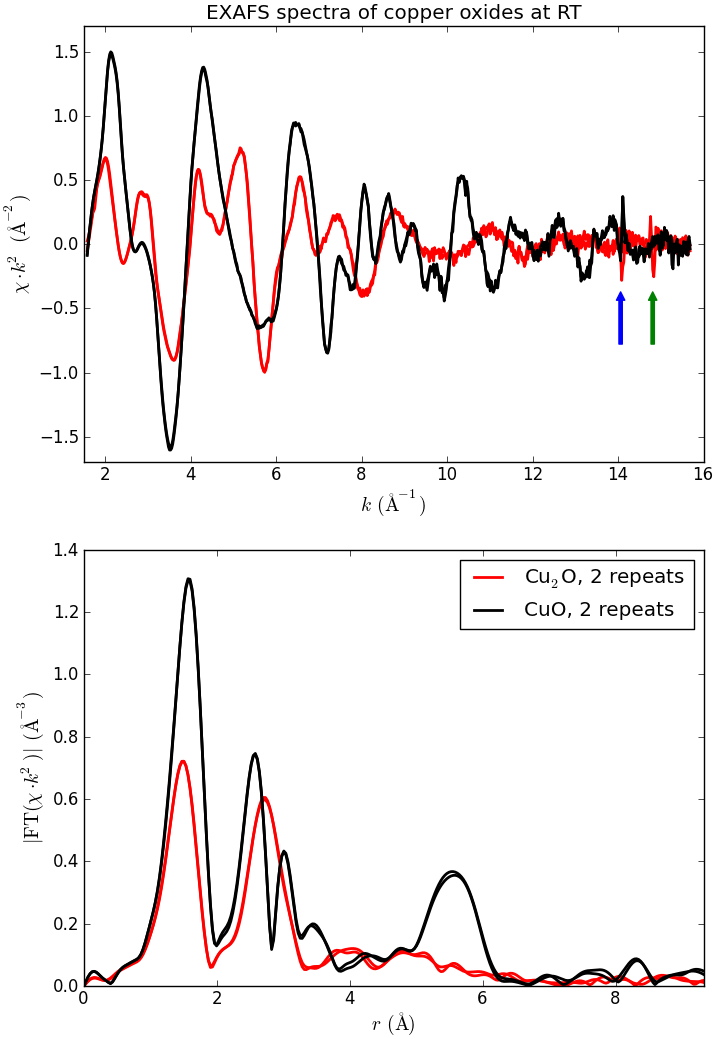
There are two issues to consider:
1) Noise
The noise at high k values is normal and can be reduced by longer acquisition times. In the figure below the sampling time was growing as k2 from 0.1 s up to 0.84 s and as k4 from 0.05 s up to 3.55 s.
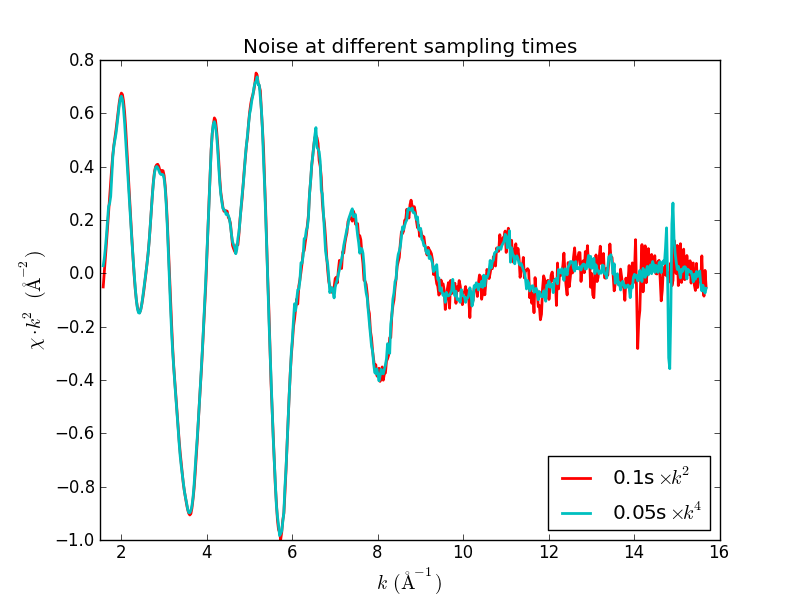
2) Glitches
The glitches are intrinsic features of monochromator crystals and cannot be removed. In the figure below one can see how many glitches are present in Cu K-edge EXAFS spectra. Most of them are normalized out after taking the ratio i0/i1; some of them persist after the normalization. On one hand, these glitches are very sharp and contribute to the FT EXAFS at very long distances and therefore can be simply neglected. On the other hand, the glitches can be moved at will by varying the roll angles of both crystals. In the figure below the curves of blue and green colors demonstrate two sets of glitches at various roll angles. These two roll settings give differently positioned unnormalized glitches as shown by the blue and green arrows on the χ·k2 graph above. Having glitches at essentially different energies, two repetitions of the same spectrum can serve as mutual references for the conventional deglitching procedures. It should be noted also that the presence of glitches strongly depends on the sample homogeneity, cf. with the spectra of copper foil below.
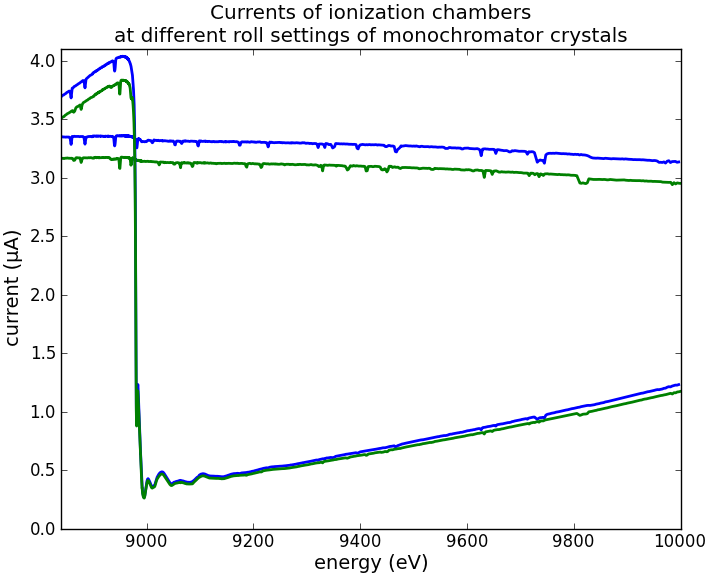
10.05.2012 The first highest quality spectra!
The figures below show two copper foil spectra in comparison with two ones taken at Hasylab. In both cases each spectrum took about 20 min. All 4 spectra practically fully merge (!) except in the XANES where our better energy resolution gives sharper features.

EXAFS with different k-weighting:
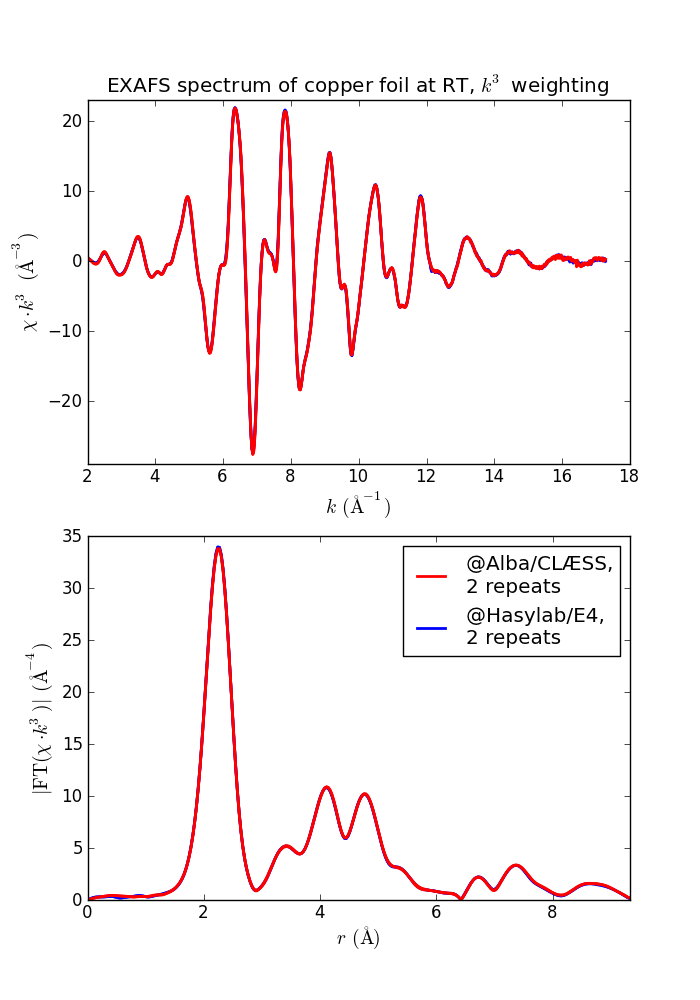
22.12.2011 The first absorption spectra measured at the sample position
The figures below show the first spectra of copper foil measured in transmission mode using two ionization chambers. The chambers were open to atmosphere and therefore the signals were not optimal. If filled with Ar, the second chamber is expected to give ~30 times higher signal. The hardware gating system is not functional yet; the synchronization is done by software means. This is an additional source of noise at present. The XANES spectra are with constant dE steps of 0.5 eV and acquisition time 0.1 s per point. The EXAFS spectra are with constant dk steps of 0.025 Å-1 and acquisition time increasing as k2. The comparison is made with the spectra measured at Hasylab/E4 beamline in transmission mode. One can see a better energy resolution at CLÆSS (better resolved features at the absorption edge) due to the beam collimation in front of the monochromator.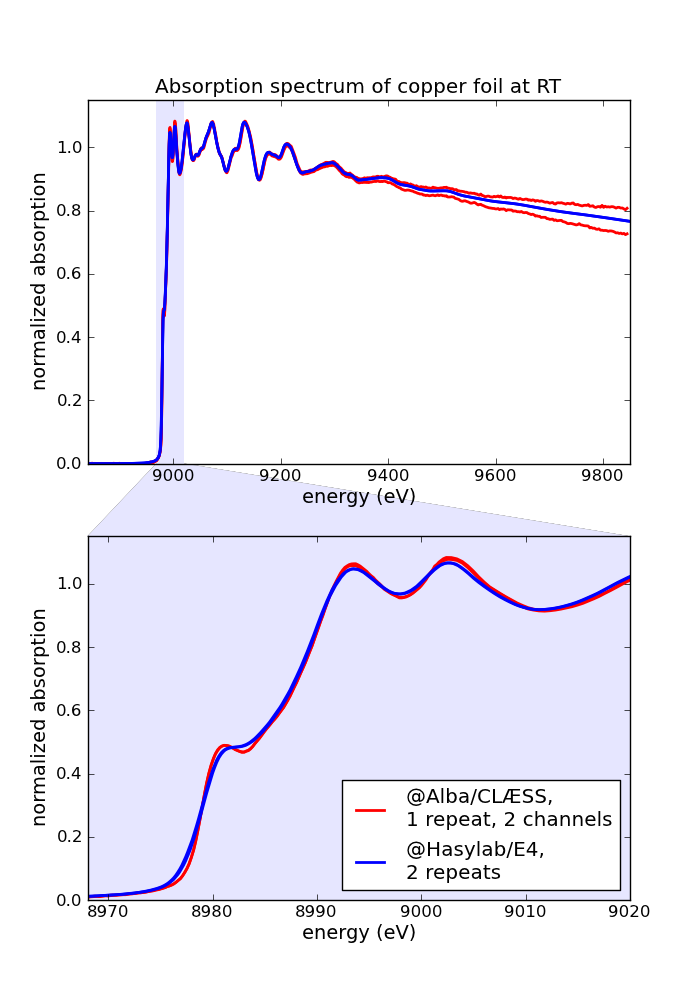
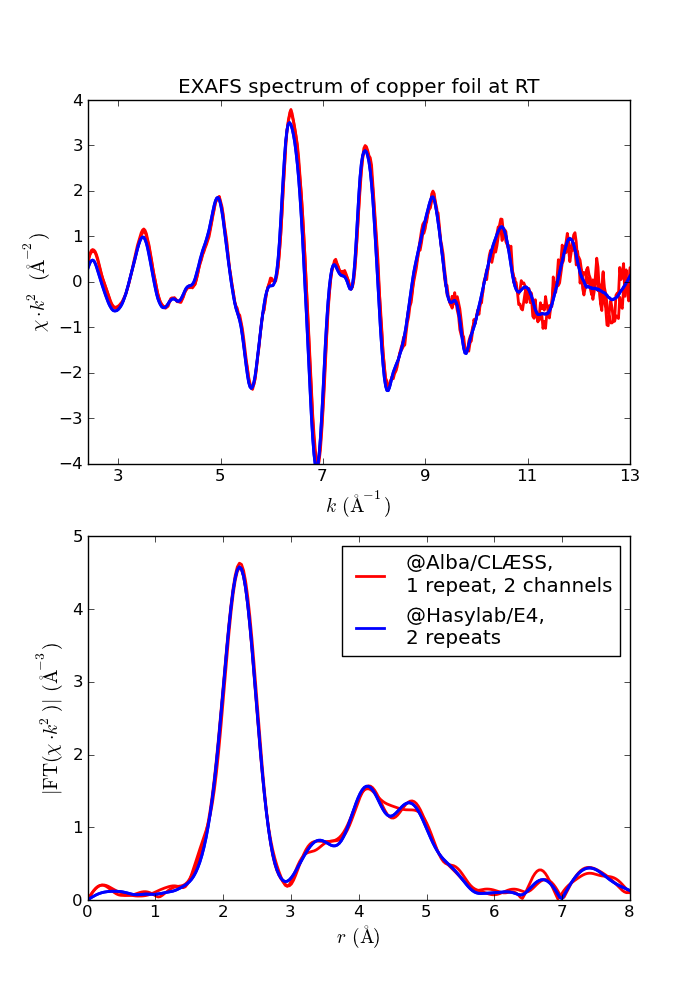
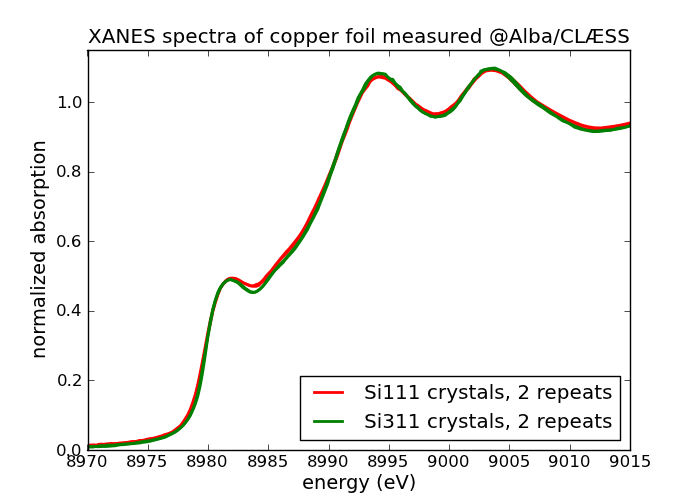
28.10.2011 The first absorption spectra measured in optical hutch
The figures below show the first spectra of copper foil at the Cu K-edge measured in fluorescence mode by the 4-diode beam position monitor (BPM). The XANES spectra are with constant dE steps of 0.5 eV and acquisition time 0.25 s per point. The EXAFS spectra are with constant dk steps of 0.025 Å-1 and acquisition time proportional to k2 (0.1 to 0.7 s per point, ~12 min in total). The comparison is made with the spectra measured at Hasylab/E4 beamline in transmission mode. The washed-out absorption features are due to the self absorption effect which cannot be corrected here because the fluorescence is not normalized to the incident intensity (the BPM itself is an I0 monitor and there is none other upstream of it). The increasing trend is due to decreasing absorption in the used 1-mm-thick carbon filter.